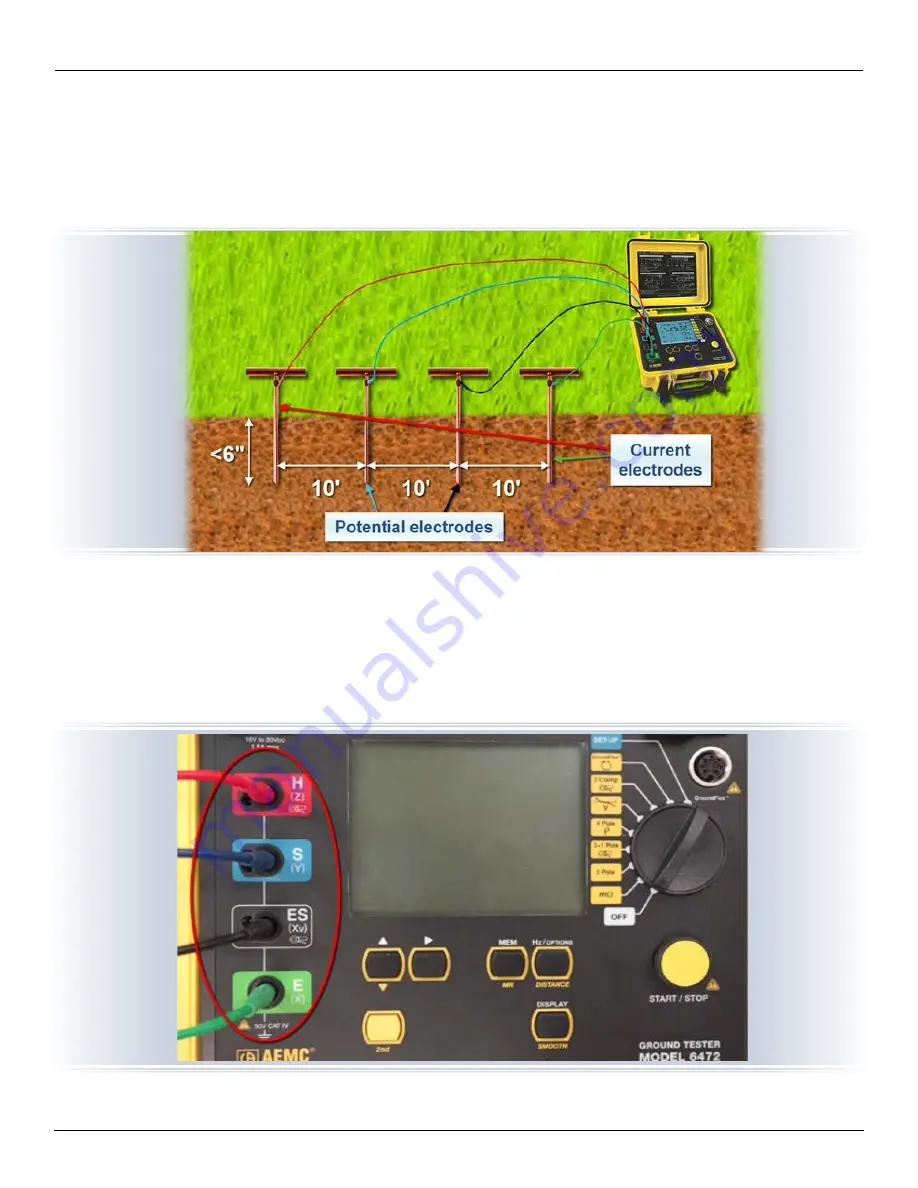
“WATTS CURRENT” TECHNICAL BULLETIN
Issue 09
Summer 2016
3
Wenner Test Setup
The Wenner test involves placing four equally spaced and in-line electrodes into the
ground. The two outer electrodes (called the current electrodes) inject current into the
soil. The two inner electrodes (called the potential electrodes) measure voltage, which is
then used to calculate soil resistance.
The Model 6472 automatically calculates soil resistivity using a formula that assumes the
auxiliary electrodes are inserted into the ground to a depth that does not exceed 1/20th
of the spacing distance between electrodes. So for our demonstration, we will place the
electrodes 10 feet apart and no more than 6 inches deep. Other distances can be used,
as long as depth does not exceed 1/20th of the spacing. Note that when calculating
the spacing-to-depth ratio, the spacing distance is the primary value. Determine the
electrode spacing first, and then adjust the depth accordingly.
The two outer electrodes are connected to the instrument’s outer terminals, labeled H
and E. The inner electrodes are connected the inner terminals, labeled S and ES.




